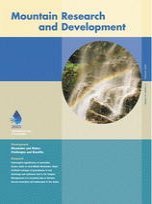Drawn by the rich pre-Columbian legacy of the region, we studied the prehistoric groups of peoples who have settled in the high canyons of Atacama (above 3000 m), on the western slopes of the South-Central Andes, for the past 30 years. The traditional culture of the present-day indigenous Andean population enabled us to interpret the material remains left by pre-Columbian peoples, especially their particular way of understanding and occupying the land, knowledge of its flora and fauna, beliefs related to the sacredness that permeates all aspects of their lives, and their way of inhabiting the landscape that surrounds them. Ethnographic research is a priority in the highlands of northern Chile because the harnessing of water for industrial and urban use has dramatically reduced extensive areas of pastureland, springs, and streams. This progressively restricts the possibility for flora, fauna, and humans to survive in traditional settlements and stimulates gradual, forced migration toward the urban enclaves of the desert. Our research aims to present some aspects of our archaeological and ethnographic work and, especially, to explore ideological aspects related to the mountains in this region, from pre-Hispanic to the present.
How to translate text using browser tools
1 February 2003
Sacred Mountains in the Highlands of the South-Central Andes
Victoria Castro,
Carlos Aldunate
Atacama
chullpas
ethnographic research
Sacred mountains





